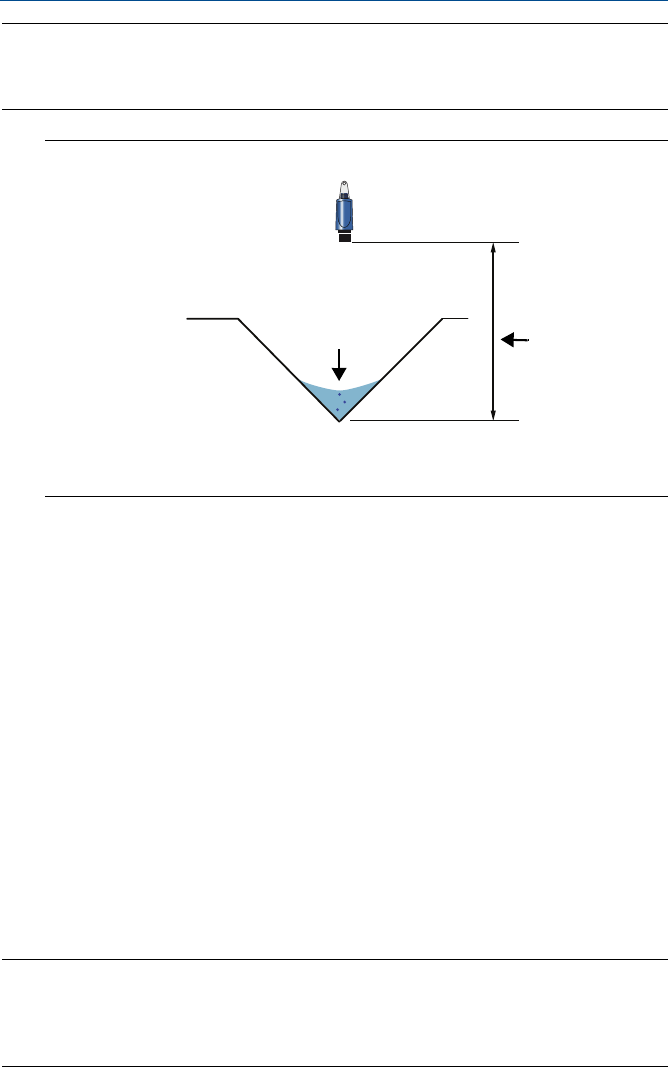
Quick Start Guide
9
December 2014
Note
The transmitter should be free from a situation where it is likely to 'drown'
(refer to the relevant standard for further information)
Figure 8. Bottom reference of a ‘V’ notch weir
A. Transmitter bottom reference (i.e. true invert)
B. Meniscus level
The Rosemount 3108 transmitter has a factory fitted remote temperature sensor.
The temperature sensor is enclosed in a M8 x 1.5 threaded stainless steel body, and
can be installed in a suitable plastic conduit box and clamped in place using a suitable
compression type cable gland.
Open weir chamber
Mount the remote temperature sensor so that it is representative of the mean air
temperature in the chamber and is in a shaded area away from direct sunlight and
solar radiation.
Enclosed or partially covered flume chamber
Mount the remote temperature sensor in the approach channel, in a shaded area away
from direct sunlight and solar radiation. The temperature sensor should be positioned
in the weir chamber or flume approach channel so the average air temperature can be
accurately measured. The temperature sensor must be protected at all times from
direct sunlight and any radiated heat.
In extreme high temperatures, for the best accuracy and stability of level
measurement reading, the transmitter should be shrouded to prevent the incidence
of direct sunlight and solar radiation. If the flow structure permits, mount the
transmitter within the flow channel or chamber.
Note
For some installations, the use of a calibration device is mandatory. Emerson offers
the Rosemount Head Verification Device (HVD) for this purpose.
See Product Data Sheet 00813-0200-4840 for more information.
B
A


















